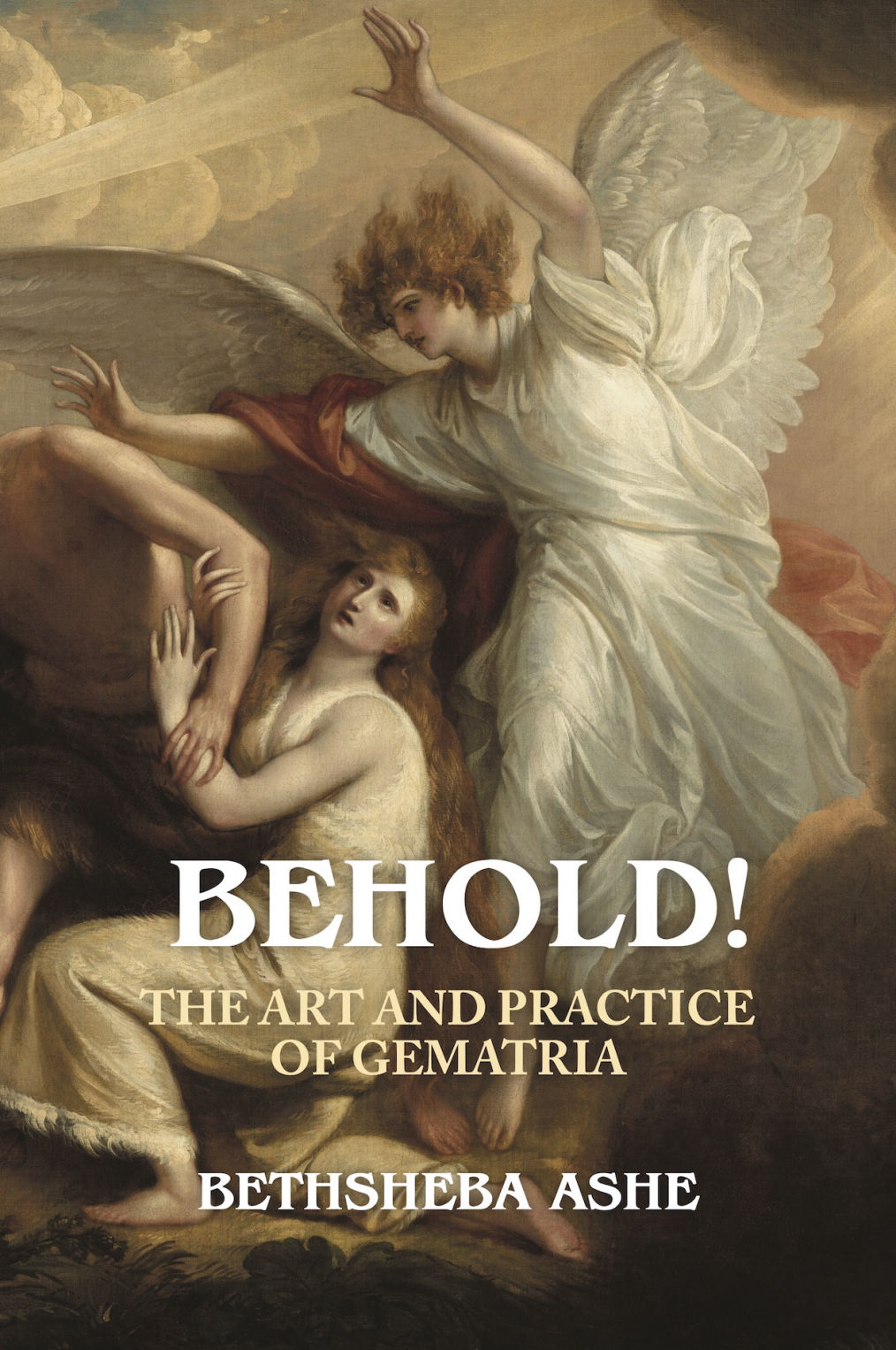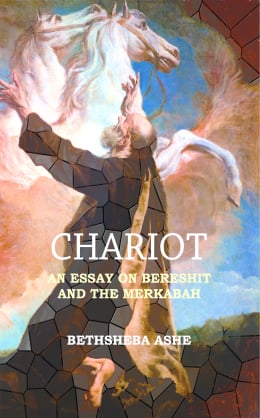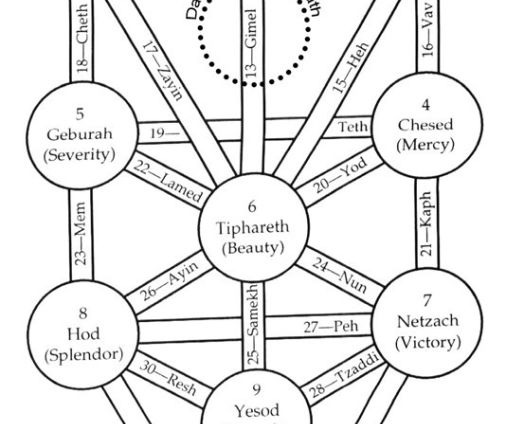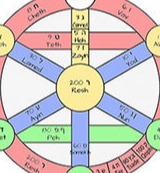Words and Calculations with the same Gematria value ...
| Word | Translation & Meaning | Transliteration | Strong's Number |
|---|
| אבימאל | Meaning: Abimael, a son of Joktan. Usage: Abimael. | ABIMAL | 39 |
| אגלים | Meaning: Eglajim, a place in Moab. Usage: Eglaim. | AGLIM | 97 |
| אגף | Meaning: (only plural) wings of an army, or crowds of troops. Usage: bands. | AGP | 102 |
| אחלמה | Meaning: a gem, probably the amethyst. Usage: amethyst. | AChLMH | 306 |
| אשף | Meaning: a conjurer. Usage: astrologer. | AShP | 825 |
| אשף | Meaning: Usage: astrologer. | AShP | 826 |
| גמולה | Meaning: the same. Usage: deed, recompense, such a reward. | GMVLH | 1578 |
| דמם | Meaning: to be dumb; by implication, to be astonished, to stop; also to perish. Usage: cease, be cut down (off), forbear, hold peace, quiet self, rest, be silent, keep (put to) silence, be (stand) still, tarry, wait. | DMM | 1826 |
| הושע | Meaning: Hoshea, the name of five Israelites. Usage: Hosea, Hoshea, Oshea. | HVShO | 1954 |
| חלום | Meaning: a dream. Usage: dream(-er). | ChLVM | 2472 |
| חמול | Meaning: Chamul, an Israelite. Usage: Hamul. | ChMVL | 2538 |
| חנוך | Meaning: Chanok, an antediluvian patriach. Usage: Enoch. | ChNVK | 2585 |
| טעה | Meaning: to wander; causatively to lead astray. Usage: seduce. | TOH | 2937 |
| ידע | Meaning: to know (properly, to ascertain by seeing); used in a great variety of senses, figuratively, literally, euphemistically and inferentially (including observation, care, recognition; and causatively, instruction, designation, punishment, etc. ). Usage: acknowledge, acquaintance(-ted with), advise, answer, appoint, assuredly, be aware, (un-) awares, can(-not), certainly, comprehend, consider, × could they, cunning, declare, be diligent, (can, cause to) discern, discover, endued with, familiar friend, famous, feel, can have, be (ig-) norant, instruct, kinsfolk, kinsman, (cause to let, make) know, (come to give, have, take) knowledge, have (knowledge), (be, make, make to be, make self) known, be learned, lie by man, mark, perceive, privy to, × prognosticator, regard, have respect, skilful, shew, can (man of) skill, be sure, of a surety, teach, (can) tell, understand, have (understanding), × will be, wist, wit, wot. | IDO | 3045 |
| ידע | Meaning: Usage: certify, know, make known, teach. | IDO | 3046 |
| ידע | Meaning: Jada, an Israelite. Usage: Jada. | IDO | 3047 |
| יעד | Meaning: to fix upon (by agreement or appointment); by implication, to meet (at a stated time), to summon (to trial), to direct (in a certain quarter or position), to engage (for marriage). Usage: agree,(maxke an) appoint(-ment, a time), assemble (selves), betroth, gather (selves, together), meet (together), set (a time). | IOD | 3259 |
| כסת | Meaning: a cushion or pillow (as covering a seat or bed). Usage: pillow. | KSTh | 3704 |
| לחום | Meaning: properly, eaten, i. e. food; also flesh, i. e. body. Usage: while. . . is eating, flesh. | LChVM | 3894 |
| לילית | Meaning: a night spectre. Usage: screech owl. | LILITh | 3917 |
| מגדל־גד | Meaning: Migdal-Gad, a place in Palestine. Usage: Migdal-gad. | MGDLGD | 4028 |
| מהתלה | Meaning: a delusion. Usage: deceit. | MHThLH | 4123 |
| מולדת | Meaning: nativity (plural birth-place); by implication, lineage, native country; also offspring, family. Usage: begotten, born, issue, kindred, native(-ity). | MVLDTh | 4138 |
| מחול | Meaning: a (round) dance. Usage: dance(-cing). | MChVL | 4234 |
| מחול | Meaning: Machol, an Israelite. Usage: Mahol. | MChVL | 4235 |
| מישאל | Meaning: Mishael, the name of three Israelites. Usage: Mishael. | MIShAL | 4332 |
| מישאל | Meaning: Mishael, an Israelite. Usage: Mishael. | MIShAL | 4333 |
| מלוח | Meaning: sea-purslain (from its saltness). Usage: mallows. | MLVCh | 4408 |
| ממד | Meaning: a measure. Usage: measure. | MMD | 4461 |
| מתושאל | Meaning: Methusael, an antediluvian patriarch. Usage: Methusael. | MThVShAL | 4967 |
| מתם | Meaning: wholesomeness; also (adverb) completely. Usage: men (by reading מת), soundness. | MThM | 4974 |
| סכת | Meaning: by implication, to observe quietly. Usage: take heed. | SKTh | 5535 |
| עדות | Meaning: testimony. Usage: testimony, witness. | ODVTh | 5715 |
| עדי | Meaning: finery; generally an outfit; specifically, a headstall. Usage: × excellent, mouth, ornament. | ODI | 5716 |
| עודד | Meaning: Oded, the name of two Israelites. Usage: Oded. | OVDD | 5752 |
| עזגד | Meaning: Azgad, an Israelite. Usage: Azgad. | OZGD | 5803 |
| עזז | Meaning: to be stout (literally or figuratively). Usage: harden, impudent, prevail, strengthen (self), be strong. | OZZ | 5810 |
| עזז | Meaning: Azaz, an Israelite. Usage: Azaz. | OZZ | 5811 |
| עטה | Meaning: to wrap, i. e. cover, veil, clothe, or roll. Usage: array self, be clad, (put a) cover (-ing, self), fill, put on, × surely, turn aside. | OTH | 5844 |
| עתוד | Meaning: prepared. Usage: ready. | OThVD | 6259 |
| עתוד | Meaning: prepared, i. e. full grown; spoken only (in plural) of he-goats, or (figuratively) leaders of the people. Usage: chief one, (he) goat, ram. | OThVD | 6260 |
| עתי | Meaning: timely. Usage: fit. | OThI | 6261 |
| עתי | Meaning: Attai, the name of three Israelites. Usage: Attai. | OThI | 6262 |
| פת | Meaning: a bit. Usage: meat, morsel, piece. | PTh | 6595 |
| פת | Meaning: a hole, i. e. hinge or the female pudenda. Usage: hinge, secret participle | PTh | 6596 |
| שאף | Meaning: to inhale eagerly; figuratively, to cover; by implication, to be angry; also to hasten. Usage: desire (earnestly), devour, haste, pant, snuff up, swallow up. | ShAP | 7602 |
| שועה | Meaning: a hallooing. Usage: crying. | ShVOH | 7775 |
| שמאלי | Meaning: situated on the left side. Usage: left. | ShMALI | 8042 |
| שמאם | Meaning: Shimam, an Israelite. Usage: Shimeam. | ShMAM | 8043 |
| תלמי | Meaning: Talmai, the name of a Canaanite and a Syrian. Usage: Talmai. | ThLMI | 8526 |
| תמם | Meaning: to complete, in a good or a bad sense, literal, or figurative, transitive or intransitive. Usage: accomplish, cease, be clean (pass-) ed, consume, have done, (come to an, have an, make an) end, fail, come to the full, be all gone, × be all here, be (make) perfect, be spent, sum, be (shew self) upright, be wasted, whole. | ThMM | 8552 |
| תף | Meaning: a tambourine. Usage: tabret, timbrel. | ThP | 8596 |





Please SHARE this PAGE!